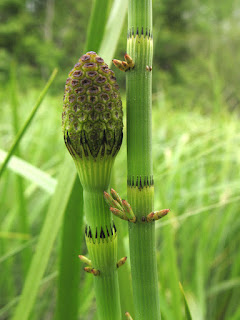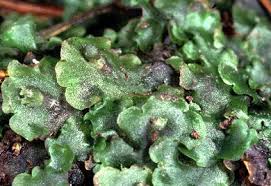*they are the first terrestrial plant to posses vascular tissue i.e. xylum and phloem.
*they are soil binder.
*they are used as medicine.
*they are used as ornamental plants.
*they grow in cool, damp and shady places.
*the dominant phase of pteridophyte are sporophyte. in bryophytes it is gametophyte.
*plant body is differentiated into true root, stem and leaf.
*leaf may be microphylls (SELAGINELLA) or macrophylls (FERNS)
*the sporophyte bear sporangia that are subtended by leaf like appendages called sporophylls.
*in some cases sporophylls may form distinct compact structures called strobili or cones.(SELAGINELLA, EQUISETUM)
*sprangia produces spore and spore germinate into prothallus.these gametophyte required cool, damp shady place to grow.
*sexual reproduction by antheridia and archegonium.
*after fertilization zygote produce sporophyte,which is dominant phase.
*the plants which have similar spores are called homosporous.
*the plants which have dissimilar spores are called heterosporous.
*female gamete are larger than male gamete.
*zygote develops into young embryo, it is the precursor to seed habitat.
*pteridophytes are further divided into four classes:-
1.PSILOPSIDA- Psilotum
2.LYCOPSIDA- Selaginella, Lycopodium
3.SPHENOPSIDA- Equisetum4.PTEROPSIDA- Dryopteris,Pteris,Adiantum
*they are soil binder.
*they are used as medicine.
*they are used as ornamental plants.
*they grow in cool, damp and shady places.
*the dominant phase of pteridophyte are sporophyte. in bryophytes it is gametophyte.
*plant body is differentiated into true root, stem and leaf.
*leaf may be microphylls (SELAGINELLA) or macrophylls (FERNS)
*the sporophyte bear sporangia that are subtended by leaf like appendages called sporophylls.
*in some cases sporophylls may form distinct compact structures called strobili or cones.(SELAGINELLA, EQUISETUM)
*sprangia produces spore and spore germinate into prothallus.these gametophyte required cool, damp shady place to grow.
*sexual reproduction by antheridia and archegonium.
*after fertilization zygote produce sporophyte,which is dominant phase.
*the plants which have similar spores are called homosporous.
*the plants which have dissimilar spores are called heterosporous.
*female gamete are larger than male gamete.
*zygote develops into young embryo, it is the precursor to seed habitat.
*pteridophytes are further divided into four classes:-
1.PSILOPSIDA- Psilotum
2.LYCOPSIDA- Selaginella, Lycopodium
3.SPHENOPSIDA- Equisetum4.PTEROPSIDA- Dryopteris,Pteris,Adiantum




























